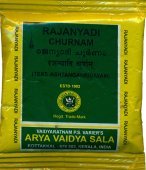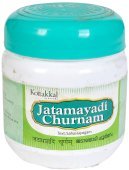Sarala, Saralā, Sharala, Śarala, Sārāla: 28 definitions
Introduction:
Sarala means something in Hinduism, Sanskrit, Jainism, Prakrit, Buddhism, Pali, Marathi, Hindi, biology. If you want to know the exact meaning, history, etymology or English translation of this term then check out the descriptions on this page. Add your comment or reference to a book if you want to contribute to this summary article.
The Sanskrit term Śarala can be transliterated into English as Sarala or Sharala, using the IAST transliteration scheme (?).
Alternative spellings of this word include Saral.
Images (photo gallery)
In Hinduism
Dharmashastra (religious law)
Source: Wisdom Library: Dharma-śāstraSarala (सरल) is a Sanskrit word, identified with Pinus longifolia (pine) by various scholars in their translation of the Śukranīti. This tree is mentioned as bearing good fruits. The King should plant such domestic plants in and near villages. He should nourish them by stoole of goats, sheep and cows, water as well as meat.
The following is an ancient Indian recipe for such nourishment of trees:
According to Śukranīti 4.4.105-109: “The trees (such as sarala) are to be watered in the morning and evening in summer, every alternate day in winter, in the fifth part of the day (i.e., afternoon) in spring, never in the rainy season. If trees have their fruits destroyed, the pouring of cold water after being cooked together with Kulutha, Māṣa (seeds), Mudga (pulse), Yava (barley) and Tila (oil seed) would lead to the growth of flowers and fruits. Growth of trees can be helped by the application of water with which fishes are washed and cleansed.”

Dharmashastra (धर्मशास्त्र, dharmaśāstra) contains the instructions (shastra) regarding religious conduct of livelihood (dharma), ceremonies, jurisprudence (study of law) and more. It is categorized as smriti, an important and authoritative selection of books dealing with the Hindu lifestyle.
Natyashastra (theatrics and dramaturgy)
Source: Wisdom Library: Nāṭya-śāstra1) Sarala (सरल) is the Sanskrit name of one of Bharata’s sons, mentioned in the Nāṭyaśāstra 1.26-33. After Brahmā created the Nāṭyaveda (nāṭyaśāstra), he ordered Bharata to teach the science to his (one hundred) sons. Bharata thus learned the Nāṭyaveda from Brahmā, and then made his sons study and learn its proper application. After their study, Bharata assigned his sons (eg., Sarala) various roles suitable to them.
2) Saralā (सरला) is the name of an Apsara created for the sake of a type of dramatic perfomance. Acording to the Nāṭyaśāstra 1.46-51, after Brahmā asked Bharata for materials necessary for the Graceful Style (kaiśikī: a type of performance, or prayoga), Bharata answered “This Style cannot be practised properly by men except with the help of women”. Therefore, Brahmā created with his mind several apsaras (celestial nymphs), such as Saralā, who were skillful in embellishing the drama.

Natyashastra (नाट्यशास्त्र, nāṭyaśāstra) refers to both the ancient Indian tradition (shastra) of performing arts, (natya—theatrics, drama, dance, music), as well as the name of a Sanskrit work dealing with these subjects. It also teaches the rules for composing Dramatic plays (nataka), construction and performance of Theater, and Poetic works (kavya).
Purana and Itihasa (epic history)
Source: Wisdom Library: Varāha-purāṇaSarala (सरल) is the name of a mountain situated at lake Mānasa and mount Gandhamādana, according to the Varāhapurāṇa chapter 75. The Gandhamādana mountain lies on the eastern side of mount Meru, which is one of the seven mountains located in Jambūdvīpa, ruled over by Āgnīdhra, a grandson of Svāyambhuva Manu, who was created by Brahmā, who was in turn created by Nārāyaṇa, the unknowable all-pervasive primordial being.
Source: JatLand: List of Mahabharata people and placesSaralā (सरला) refers to the name of a River mentioned in the Mahābhārata (cf. VI.10.22). Note: The Mahābhārata (mentioning Saralā) is a Sanskrit epic poem consisting of 100,000 ślokas (metrical verses) and is over 2000 years old.

The Purana (पुराण, purāṇas) refers to Sanskrit literature preserving ancient India’s vast cultural history, including historical legends, religious ceremonies, various arts and sciences. The eighteen mahapuranas total over 400,000 shlokas (metrical couplets) and date to at least several centuries BCE.
Vyakarana (Sanskrit grammar)
Source: Wikisource: A dictionary of Sanskrit grammarSaralā (सरला).—Name of a comparatively modern lucid commentary written by Taranatha Tarkavacaspati on the Siddhantakaumudi.

Vyakarana (व्याकरण, vyākaraṇa) refers to Sanskrit grammar and represents one of the six additional sciences (vedanga) to be studied along with the Vedas. Vyakarana concerns itself with the rules of Sanskrit grammar and linguistic analysis in order to establish the correct context of words and sentences.
Ayurveda (science of life)
Kalpa (Formulas, Drug prescriptions and other Medicinal preparations)
Source: Shodhganga: Edition translation and critical study of yogasarasamgrahaSaralā (सरला) [or Saraḷā] refers to the medicinal plant known as “Operculina turpethum (Linn.) Silva Manso” and is dealt with in the 15th-century Yogasārasaṅgraha (Yogasara-saṅgraha) by Vāsudeva: an unpublished Keralite work representing an Ayurvedic compendium of medicinal recipes. The Yogasārasaṃgraha [mentioning saralā] deals with entire recipes in the route of administration, and thus deals with the knowledge of pharmacy (bhaiṣajya-kalpanā) which is a branch of pharmacology (dravyaguṇa).
Veterinary Medicine (The study and treatment of Animals)
Source: Asian Agri-History: Paśu Āyurvēda (Veterinary Medicine) in GaruḍapurāṇaSarala (सरल) refers to Pinus longifolia and is used in the protection rites of Horses (Aśvarakṣaṇa), according to Āyurveda sections in the Garuḍapurāṇa.—For the Rakṣa (protection) Revanta-pūjā, (worship of God Revanta) homa (sacrificial offerings) and dvija-bhojana (feeding of Brahmins) should be performed in favor of the horse. And a compound made up of following drugs should be tied round the neck of the horse [e.g., Sarala (Pinus longifolia)] [...].
Toxicology (Study and Treatment of poison)
Source: Shodhganga: Kasyapa Samhita—Text on Visha ChikitsaSarala (सरल) refers to an herbal ingredient included in a Recipe which will bring a dead person to life, according to the Kāśyapa Saṃhitā: an ancient Sanskrit text from the Pāñcarātra tradition dealing with both Tantra and Viṣacikitsā—an important topic from Āyurveda which deals with the study of Toxicology (Viṣavidyā or Sarpavidyā).—Kāśyapa prescribes various antidotes to quell the poison by administering them through nasal drugs, collyrium, ointment, herbal drinks and diet. One antidote he suggests doubles up as a nasal application and collyrium—[including for example, sarala] [...], made with urine (bovine) which will bring to life, a dead person.

Āyurveda (आयुर्वेद, ayurveda) is a branch of Indian science dealing with medicine, herbalism, taxology, anatomy, surgery, alchemy and related topics. Traditional practice of Āyurveda in ancient India dates back to at least the first millenium BC. Literature is commonly written in Sanskrit using various poetic metres.
Shaktism (Shakta philosophy)
Source: Addaiyan Journal of Arts, Humanities and Social Sciences: Tantra Literature of Kerala- Special Reference to MātṛsadbhāvaSarala (सरल) refers to a type of “pine tree” and represents of the trees used for making Bimbas or Pratimās, according to the Mātṛsadbhāva, one of the earliest Śākta Tantras from Kerala.—Mātṛsadbhāva is a Kerala Tantric ritual manual dealing with the worship of Goddess Bhadrakālī (also known as Rurujit) along with sapta-mātṛs or Seven mothers. [...] There are many descriptions about the flora and fauna in Mātṛssadbhāva. [...] In the fourth chapter the author discussed about different types of trees [e.g., sarala] can be used to make pratimā or bimba.

Shakta (शाक्त, śākta) or Shaktism (śāktism) represents a tradition of Hinduism where the Goddess (Devi) is revered and worshipped. Shakta literature includes a range of scriptures, including various Agamas and Tantras, although its roots may be traced back to the Vedas.
Sports, Arts and Entertainment (wordly enjoyments)
Source: archive.org: Syainika Sastra of Rudradeva with English Translation (art)Sarala (सरल) refers to the “pine-trees” (of the Himalaya mountains), according to the Śyainika-śāstra: a Sanskrit treatise dealing with the divisions and benefits of Hunting and Hawking, written by Rājā Rudradeva (or Candradeva) in possibly the 13th century.—Accordingly, [while discussing the treatment of hawks]: “In summer, [...] when birds cry out piteously, then the season, like the forest fire, becomes intolerable to these birds [i.e., hawks], who are accustomed to the valleys of the Himalayas, on which fine slabs of stone lie scattered, cleanly washed by the waterfalls and overgrown with young shoots of emerald-green grass, and where the breezes blow fragrant with the exudation of the pine-trees (sarala-niryāsa). Therefore cooling processes should be now resorted to”.

This section covers the skills and profiencies of the Kalas (“performing arts”) and Shastras (“sciences”) involving ancient Indian traditions of sports, games, arts, entertainment, love-making and other means of wordly enjoyments. Traditionally these topics were dealt with in Sanskrit treatises explaing the philosophy and the justification of enjoying the pleasures of the senses.
In Jainism
General definition (in Jainism)
Source: Wisdom Library: JainismSarala (सरल) is the name of the caitya-tree under which the parents of Saṃbhava are often depicted in Jaina iconography, according to the Digambara tradition. According to the Śvetāmbara tradition the tree is known as Śāla (identified with Shorea robusta). The term caitya refers to “sacred shrine”, an important place of pelgrimage and meditation in Jainism. Sculptures with such caitya-trees generally shows a male and a female couple seated under a tree with the female having a child on her lap. Usually there is a seated Jina figure on top of the tree.
Saṃbhava is the third of twenty-four tīrthaṅkaras: enlightened beings who, having conquered saṃsāra (cycle of birth and death), leave a path behind for others to follow. His father is Jitari and his mother is Senā according to Śvetāmbara but Suṣeṇā according to Digambara, according to the Ācāradinakara (14th century work on Jain conduct written by Vardhamāna Sūri).

Jainism is an Indian religion of Dharma whose doctrine revolves around harmlessness (ahimsa) towards every living being. The two major branches (Digambara and Svetambara) of Jainism stimulate self-control (or, shramana, ‘self-reliance’) and spiritual development through a path of peace for the soul to progess to the ultimate goal.
Biology (plants and animals)
Source: Google Books: CRC World Dictionary (Regional names)Sarala in India is the name of a plant defined with Heteropogon contortus in various botanical sources. This page contains potential references in Ayurveda, modern medicine, and other folk traditions or local practices It has the synonym Andropogon glaber (Pers.) Raspail, nom. illeg., non Andropogon glaber Roxb. (among others).
Example references for further research on medicinal uses or toxicity (see latin names for full list):
· Reliquiae Haenkeanae (1830)
· New Phytologist (1873)
· Flora van Nederlandsch Indië (1857)
· Essai d’une Nouvelle Agrostographie (1812)
· Anales del Museo Nacional de Buenos Aires (1904)
· Synopsis Plantarum Glumacearum (1854)
If you are looking for specific details regarding Sarala, for example side effects, extract dosage, diet and recipes, health benefits, pregnancy safety, chemical composition, have a look at these references.

This sections includes definitions from the five kingdoms of living things: Animals, Plants, Fungi, Protists and Monera. It will include both the official binomial nomenclature (scientific names usually in Latin) as well as regional spellings and variants.
Languages of India and abroad
Pali-English dictionary
Source: Sutta: The Pali Text Society's Pali-English DictionarySarala, the tree Pinus longifolia J. V, 420 (thus read with B instead of salaḷa (?)). (Page 698)

Pali is the language of the Tipiṭaka, which is the sacred canon of Theravāda Buddhism and contains much of the Buddha’s speech. Closeley related to Sanskrit, both languages are used interchangeably between religions.
Marathi-English dictionary
Source: DDSA: The Molesworth Marathi and English Dictionarysarala (सरल).—a (S) Straight, right, direct, not crooked or oblique. 2 fig. Honest, artless, upright--a person: plain, open, sincere--speech: clear, easy, simple--a style, discourse &c.
--- OR ---
sarala (सरल).—m S A sort of pine, P. longifolia. Rox.
--- OR ---
saraḷa (सरळ).—f C Rice-straw.
--- OR ---
saraḷa (सरळ).—a (sarala S) Straight or direct. 2 fig. Guileless, honest, sincere, ingenuous, straightforward, blunt, plain--a person, speech, procedure: also clear, simple, easy, flowing--a style &c.
Source: DDSA: The Aryabhusan school dictionary, Marathi-Englishsaraḷa (सरळ).—a Straight. Fig. Honest, plain. f Rice-straw.
Marathi is an Indo-European language having over 70 million native speakers people in (predominantly) Maharashtra India. Marathi, like many other Indo-Aryan languages, evolved from early forms of Prakrit, which itself is a subset of Sanskrit, one of the most ancient languages of the world.
Sanskrit dictionary
Source: DDSA: The practical Sanskrit-English dictionaryŚarala (शरल).—a.
1) See सरल (sarala).
2) Crooked; fraudulent.
--- OR ---
Sarala (सरल).—a. [sṛ-alac Uṇādi-sūtra 1.15]
1) Straight, not crooked.
2) Honest, upright, sincere, candid.
3) Simple, artless, simple-minded; सरले साहसरागं परिहर (sarale sāhasarāgaṃ parihara) Mālatīmādhava (Bombay) 6.1; अयि सरले किमत्र मया भगवत्या शक्यम् (ayi sarale kimatra mayā bhagavatyā śakyam) 2.
-laḥ 1 A kind of pine tree; विघट्टितानां सरलद्रुमाणाम् (vighaṭṭitānāṃ saraladrumāṇām) Kumārasambhava 1.9; Meghadūta 55; R. 4.75; also सरला (saralā).
2) Fire.
--- OR ---
Sārāla (साराल).—Sesamum.
Derivable forms: sārālaḥ (सारालः).
Source: Cologne Digital Sanskrit Dictionaries: Edgerton Buddhist Hybrid Sanskrit DictionarySarala (सरल).—nt., = (and cited from) saraḍa, q.v.
Source: Cologne Digital Sanskrit Dictionaries: Shabda-Sagara Sanskrit-English DictionaryŚarala (शरल).—mfn.
(-laḥ-lā-laṃ) 1. Upright, honest. 2. Crooked, fraudulent. m.
(-laḥ) A tree, a sort of pine. E. sṛ to go, alac aff., and sa changed to śa; whence the word is preferably read sarala .
--- OR ---
Sarala (सरल).—mfn.
(-laḥ-lā-laṃ) 1. Honest, sincere, candid, upright. 2. Straight. 3. Guileless. m.
(-laḥ) 1. A sort of pine, (Pinus longifolia.) 2. A bird, (Pavo bicalcarata.) f.
(-lā) A variety of the plant called Teori. E. sṛ to go, (to spread fragrance abroad, &c.,) alac Unadi aff.
--- OR ---
Sārāla (साराल).—m.
(-laḥ) Sesamum. “tilavṛkṣe.” E. sāramālāti ā + lā-ka .
Source: Cologne Digital Sanskrit Dictionaries: Benfey Sanskrit-English DictionaryŚarala (शरल).— (cf. sarala), I. adj. 1. Upright, [Pañcatantra] iii. [distich] 69. 2. Fraudulent(?). Ii. m. A sort of pine, [Rāmāyaṇa] 5, 17, 15.
--- OR ---
Sarala (सरल).— (vb. sṛ), I. adj. 1. Straight, [Pañcatantra] ii. [distich] 189. 2. Upright, honest, [Mālatīmādhava, (ed. Calc.)] 38, 1. Ii. m. A sort of pine, Pinus longifolia Roxb., [Meghadūta, (ed. Gildemeister.)] 54.
Source: Cologne Digital Sanskrit Dictionaries: Cappeller Sanskrit-English DictionarySarala (सरल).—[adjective] straight, direct, candid, honest; [masculine] & [feminine] ā names of trees.
Source: Cologne Digital Sanskrit Dictionaries: Aufrecht Catalogus Catalogorum1) Saralā (सरला) as mentioned in Aufrecht’s Catalogus Catalogorum:—[grammatical] Oppert. Ii, 7009. 8408.
—Siddhāntakaumudīṭīkā.
2) Saralā (सरला):—[dharma] Quoted by Raghunandana (who also knew of a
—[commentary] to it), in Vivādārṇava L. 3165.
3) Saralā (सरला):—a
—[commentary] on Nīlakaṇṭha’s Tājika by Govinda.
4) Saralā (सरला):—a
—[commentary] on Rāmacandra’s Samarasāra, by Bharata.
1) Śarala (शरल):—etc. See sarala.
2) Sarala (सरल):—[from sara] mf(ā)n. ‘running on’, straight (not ‘crooked’), [Kāvya literature; Rājataraṅgiṇī]
3) [v.s. ...] outstretched, [Kathāsaritsāgara; Rājataraṅgiṇī]
4) [v.s. ...] right, correct, [Prasaṅgābharaṇa; Taittirīya-prātiśākhya [Scholiast or Commentator]]
5) [v.s. ...] upright, sincere, candid, honest, artless, simple, [Kāvya literature; Kathāsaritsāgara; Rājataraṅgiṇī]
6) [v.s. ...] real (not ‘sham’), [Bālarāmāyaṇa]
7) [v.s. ...] = vigīta, [cf. Lexicographers, esp. such as amarasiṃha, halāyudha, hemacandra, etc.]
8) [v.s. ...] m. a species of pine tree, Pinus Longifolia, [Mahābhārata; Kāvya literature] etc.
9) [v.s. ...] a kind of bird, Pavo Bicalcaratus, [cf. Lexicographers, esp. such as amarasiṃha, halāyudha, hemacandra, etc.]
10) [v.s. ...] fire, [cf. Lexicographers, esp. such as amarasiṃha, halāyudha, hemacandra, etc.]
11) [v.s. ...] a Buddha, [cf. Lexicographers, esp. such as amarasiṃha, halāyudha, hemacandra, etc.]
12) Saralā (सरला):—[from sarala > sara] f. the above pine, [Bhāvaprakāśa]
13) [v.s. ...] Ipomoea Turpethum, [cf. Lexicographers, esp. such as amarasiṃha, halāyudha, hemacandra, etc.]
14) [v.s. ...] Name of a river, [cf. Lexicographers, esp. such as amarasiṃha, halāyudha, hemacandra, etc.]
15) Sarala (सरल):—[from sara] n. resin of the pine, [Rāmāyaṇa; Suśruta]
16) [v.s. ...] a [particular] high number, [Buddhist literature]
17) Sārāla (साराल):—m. the sesamum plant, [cf. Lexicographers, esp. such as amarasiṃha, halāyudha, hemacandra, etc.]
Source: Cologne Digital Sanskrit Dictionaries: Yates Sanskrit-English Dictionary1) Śarala (शरल):—[(laḥ-lā-laṃ) a.] Straight-forward, upright, honest; crooked. m. Sort of pine tree.
2) Sarala (सरल):—[(laḥ-lā-laṃ) a.] Straight; honest, upright. m. A sort of pine; a sort of peacock. 1. f. A plant, Teori.
3) Sārāla (साराल):—(laḥ) 1. m. Sesamum.
Source: DDSA: Paia-sadda-mahannavo; a comprehensive Prakrit Hindi dictionary (S)Sarala (सरल) in the Sanskrit language is related to the Prakrit word: Sarala.
[Sanskrit to German]
Sanskrit, also spelled संस्कृतम् (saṃskṛtam), is an ancient language of India commonly seen as the grandmother of the Indo-European language family (even English!). Closely allied with Prakrit and Pali, Sanskrit is more exhaustive in both grammar and terms and has the most extensive collection of literature in the world, greatly surpassing its sister-languages Greek and Latin.
Hindi dictionary
Source: DDSA: A practical Hindi-English dictionarySarala (सरल) [Also spelled saral]:—(a) easy; simple; straight; direct; straight-forward; ingenuous; light; ~[tā] easiness; simplicity; straightness; directness; straightforwardness; ingenuity; —[byāja] simple interest; —[rekhā] a straight line; —[saṃgīta] light music; ~[hṛdaya] simple-hearted, straight, ingenuous; ~[hṛdayatā] simple-heartedness, straightness, ingenuity.
...
Prakrit-English dictionary
Source: DDSA: Paia-sadda-mahannavo; a comprehensive Prakrit Hindi dictionarySarala (सरल) in the Prakrit language is related to the Sanskrit word: Sarala.
Prakrit is an ancient language closely associated with both Pali and Sanskrit. Jain literature is often composed in this language or sub-dialects, such as the Agamas and their commentaries which are written in Ardhamagadhi and Maharashtri Prakrit. The earliest extant texts can be dated to as early as the 4th century BCE although core portions might be older.
Kannada-English dictionary
Source: Alar: Kannada-English corpusSarala (ಸರಲ):—
1) [adjective] not bent, crooked, bowed or curly; straight.
2) [adjective] honest; upright; sincere.
3) [adjective] not ornate; unembellished; unadorned.
4) [adjective] not luxurious or elegant; plain; simple.
5) [adjective] not extravagant; reasonable (in spending); simple.
6) [adjective] not showy, flashy or ostentatious.
7) [adjective] easy to do, solve or understand, as a task, question, etc.; simple.
--- OR ---
Sarala (ಸರಲ):—
1) [noun] = ಸರಲತೆ [saralate].
2) [noun] the tree Pinus longifolia of Pinaceae family.
3) [noun] the female of Bos grunniens with stocky, long-hair yak.
4) [noun] the condition of suffering from any disease; illness; sickness.
5) [noun] the duck Anas poecilorhyncha of Anatidae family with flat dark-grey bill that is yellow at the tip, two red spots at the root of the bill, light grey and white plumes, short tail, red web-feet, that lives in water tanks.
6) [noun] the bird Pavo Bicalcaratus.
7) [noun] the plant Ipomoea turpethum of Convolvulaceae family.
8) [noun] fire.
9) [noun] (pros.) a meter having four lines each having two groups of three syllables each, followed by a long one (uu-, -u-, -).
10) [noun] (dance) the position of arms that is bent when stretched up, below and to the sides.
--- OR ---
Saraḷa (ಸರಳ):—
1) [adjective] not bent, crooked, bowed or curly; straight.
2) [adjective] honest; upright; sincere.
3) [adjective] not ornate; unembellished; unadorned.
4) [adjective] not luxurious or elegant; plain; simple.
5) [adjective] not extravagant; reasonable (in spending); simple.
6) [adjective] not showy, flashy or ostentatious.
7) [adjective] easy to do, solve or understand (said of a task, question, etc.); simple.
--- OR ---
Saraḷa (ಸರಳ):—
1) [noun] = ಸರಳತೆ [saralate].
2) [noun] the tree Pinus longifolia of Pinaceae family.
3) [noun] the female of Bos grunniens with stocky, long-hair yak.
4) [noun] the condition of suffering from any disease; illness; sickness.
5) [noun] the duck Anas poecilorhyncha of Anatidae family with flat dark-grey bill that is yellow at the tip, two red spots at the root of the bill, light grey and white plumes, short tail, red web-feet, that lives in water tanks.
6) [noun] the bird Pavo Bicalcaratus.
7) [noun] the plant Ipomoea turpethum of Convolvulaceae family.
8) [noun] fire.
9) [noun] (pros.) a meter having four lines of seven syllables each (uu-, -u-, -).
10) [noun] (dance) the position of arms that is bent when stretched up, below and to the sides.
--- OR ---
Sārala (ಸಾರಲ):—[noun] the tree Bauhinia variegata of Caesalpiniaceae family.
Kannada is a Dravidian language (as opposed to the Indo-European language family) mainly spoken in the southwestern region of India.
See also (Relevant definitions)
Starts with (+19): Caralai, Caralam, Caralantal, Caralatevataram, Caralavatti, Sarala kuyyan, Sarala pagada, Sarala-citta, Sarala-karaka, Sarala-pagada, Sarala-sangita, Saralabaddi, Saralabhashya, Saraladaru, Saraladevadaru, Saraladrava, Saralahari, Saralakashtha, Saralamkara, Saralanem.
Ends with: Aisarala, Antahsarala, Aralasarala, Aysarala, Gurusarala, Kesarala, Laghusarala, Pusarala, Susarala, Visarala.
Full-text (+88): Saraladrava, Saralayayin, Caralam, Sharalata, Saralatva, Saralayayini, Saralya, Saralanga, Savaha, Paribhadra, Narmara, Sarali, Saral, Shikara, Saralasyanda, Saralakashtha, Saraladevadaru, Saralaskandhasamghattajanman, Antahsarala, Laghusarala.
Relevant text
Search found 41 books and stories containing Sarala, Saralā, Saraḷa, Śarala, Sārāla, Saraḷā, Sārala, Sharala; (plurals include: Saralas, Saralās, Saraḷas, Śaralas, Sārālas, Saraḷās, Sāralas, Sharalas). You can also click to the full overview containing English textual excerpts. Below are direct links for the most relevant articles:
The theme of Marital Disintegration in Ruth Prawer < [October – December, 1994]
Landmarks in Oriya Literature < [October 1951]
Some Recent Novels of Tagore < [March-April 1935]
Bhakti-rasamrta-sindhu (by Śrīla Rūpa Gosvāmī)
Verse 3.3.55 < [Part 3 - Fraternal Devotion (sakhya-rasa)]
Vaisheshika-sutra with Commentary (by Nandalal Sinha)
Sūtra 4.2.5 (Body is two-fold: sexually produced, and asexually produced) < [Chapter 2 - Of Tangible Atomic Products]
Puranic encyclopaedia (by Vettam Mani)
Mahabharata (English) (by Kisari Mohan Ganguli)
Section CLV < [Apaddharmanusasana Parva]
Section CLVII < [Tirtha-yatra Parva]
Section XIV < [Anusasanika Parva]
Brihad Bhagavatamrita (commentary) (by Śrī Śrīmad Bhaktivedānta Nārāyana Gosvāmī Mahārāja)
Verse 1.6.88 < [Chapter 6 - Priyatama (the most beloved devotees)]
Related products







